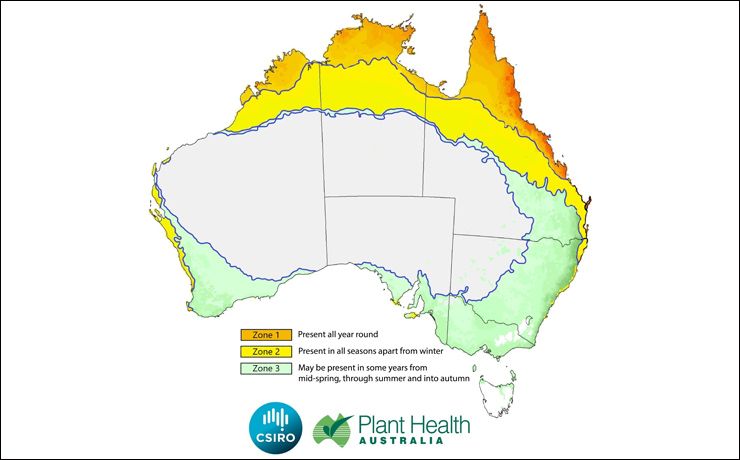

(Photo: Wikipedia)
November 16, 2020
The destructive fall armyworm moth – first detected in Australia in February this year – is here to stay.
Plant Health Australia (PHA) National Manager for Preparedness Stuart Kearns said it had been determined it was unfeasible to eradicate the pest
“Unfortunately, this moth is here to stay. After it was detected in the north of Australia earlier this year it has spread rapidly southwards on prevailing winds,” he said.
“While these northern areas are likely to host fall armyworm populations in crops, pastures and weeds, it is difficult to know just how significant a pest fall armyworm will be in the regions further south.”
Fall armyworm (Spodoptera frugiperda) is native to tropical and sub-tropical parts of the Americas. It was first detected outside its native range in early 2016 and has since spread to Africa, the Indian subcontinent, China and south-east Asia.
In some of these areas it has developed resistance to commonly used pesticides.
Fall armyworm has quickly became established across northern parts of Queensland, the Northern Territory and Western Australia after it was first detected in the Torres Strait in February.
In April, southburnett.com.au unsuccessfully tried to confirm reports the moth had been found in the South Burnett.
In unmanaged situations, fall armyworm has been known to decimate crops overseas, especially maize, sweetcorn and sorghum.
It has been observed on 350 different plant species with 11 crop industries potentially at risk.
“As fall armyworm is new to Australia, we are relying on information and experience from overseas until locally generated data is developed to bolster this information,”Mr Kearns said.
“We have sourced knowledge from around the world to develop a new reference guide on the pest, together with a series of podcasts, that will help industry manage the invasive moth species.
“The information assembled includes how to scout for and recognise the pest, its lifecycle and biology, estimated areas at risk, and management practices that will help to limit the damage it causes.”
The Fall Armyworm Continuity Plan for the Australian Grains Industry is a 75-page document intended for use as a reference guide.
It provides a basis for designing area-wide management plans, crop-specific management manuals and strategies to avoid resistance to chemical controls.
Another resource, a series of podcasts, is aimed primarily at agronomists and growers to prepare farm businesses for potential impacts.
The 30-minute podcasts are available for free on the PBRI website
Mr Kearns urged industries, agronomists and producers to find out about fall armyworm, and the risk it posed to their businesses.
He said early detection was critical to controlling populations which can build up quickly if unchecked.
He advised farmers to actively monitor the presence, population, and movement of the pest in their regions.
“No one knows exactly how this new pest will behave in crops and regions in Australia, but it’s best to get on the front foot and prepare for its arrival,” he said.
Related articles:





















